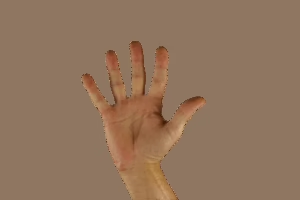Revolutionary Insights: How One Book Changed Our Understanding of Global History
Introduction
In the vast landscape of historical scholarship, certain works stand tall, shaping our understanding of the past and framing how we view global interactions. One such transformative book, “Guns, Germs, and Steel” by Jared Diamond, published in 1997, has revolutionized discussions around the shaping of human societies. This article explores the key insights from Diamond’s work, its impact on historiography, and how it has influenced contemporary views on global history.
The Premise of “Guns, Germs, and Steel”
The Central Thesis
At its core, Diamond’s book seeks to answer a provocative question: Why did some societies advance more rapidly than others? He argues against racial determinism and posits that geographical and environmental factors played a decisive role in the disparate rates of development among human societies. Diamond identifies three primary elements—guns, germs, and steel—as the factors that contributed to the dominance of Western civilizations.
Geographic Luck
One of the key concepts in Diamond’s thesis is geographic luck. He points out that the layout of continents, the availability of domesticable plants and animals, and the ease of communication and transportation significantly influenced the development of societies. For instance, societies that had access to a diverse range of domesticable crops—like those in the Fertile Crescent—were able to establish stable food surpluses, leading to population growth and advanced social structures.
The Role of Agriculture
Agriculture emerges as a cornerstone in Diamond’s narrative. He discusses how the transition from hunter-gatherer societies to agricultural ones allowed for surplus production, which in turn led to job specialization. This specialization catalyzed technological and social innovations, ultimately contributing to the rise of complex societies.
The Influence of Germs
Diamond highlights the role of infectious diseases in shaping global history. He argues that societies that had domesticated animals were more susceptible to zoonotic diseases, which, through the course of history, provided them immunity but also devastated other populations during encounters. This concept of “virgin soil epidemics” provides a chilling lens through which to view colonial encounters, illustrating how diseases often facilitated the domination of indigenous populations.
Case Studies
The consequences of these diseases are starkly illustrated in case studies of the Aztec and Inca empires. When the Spaniards arrived, they brought with them the germs that decimated these populations, making subjugation significantly easier. This phenomenon was not merely a matter of military technology but rather a complex interplay of biology and geography.
The Impact of Technology: Steel and Beyond
While guns and steel denote technological advancements, Diamond argues that they were invariably linked to the agricultural surplus and the consequent societal structure. The development of metallurgy allowed certain societies to forge superior weapons, enhancing military prowess. This technological advantage was compounded by the systematic innovations that followed from stable, complex societies, such as writing and the wheel.
Historical Critique and Broader Implications
Challenging Eurocentrism
Diamond’s exploration is a decisive critique of Eurocentrism in historical interpretation. By showing how environmental and geographic factors shaped different societies, he reframes the narrative of Western superiority. Instead of viewing European expansion as a result of innate superiority, he posits that it was largely contingent on luck and circumstance.
Globalization of History
The book encourages a more global approach to history, emphasizing interconnectedness and the role of non-Western civilizations in shaping the world. As it posits that various empires and societies have influenced one another over millennia, it underscores the importance of studying global history as a tapestry rather than a series of isolated events.
Critiques and Counterarguments
Reductionism
While “Guns, Germs, and Steel” has garnered widespread acclaim, it is not without its critics. Some scholars argue that Diamond’s thesis oversimplifies the complexities of historical processes by attributing too much to geography and environment. Critics contend that such reductionism may overlook the significant roles of culture, individual agency, and historical contingencies.
Agency and Culture
The role of human agency cannot be understated. While environmental factors influence development, the decisions made by individuals and societies crucially shape historical events. Some historians argue that culture, ideology, and leadership also play significant roles that Diamond’s model inadequately addresses.
The Legacy of Diamond’s Work
Historical Scholarship
Diamond’s work has ushered in a new era of interdisciplinary research. His blending of history, biology, and environmental science creates a compelling framework for understanding human development. The book has encouraged historians to consider a wider array of factors in their analyses and has opened up discussions about the implications of geography in shaping history.
Educational Impact
In educational contexts, “Guns, Germs, and Steel” has become a staple in curricula around the world. Its accessible prose and thought-provoking ideas have inspired countless students to explore history from a broader, more inclusive perspective, leading to a resurgence of interest in global history and systemic studies.
Conclusion
“Guns, Germs, and Steel” stands as a monumental text that challenges our understanding of the factors that shaped human history. By emphasizing geographical and environmental influences over racial theories, it has redefined discussions in historical scholarship and education. While critiques of the book offer important perspectives on the complexity of historical narratives, its central themes remain relevant and resonate through contemporary discussions on global history.
As we move forward, engaging with Diamond’s insights will be crucial in fostering a more nuanced understanding of our past, ensuring that we recognize the intricate web of factors that have influenced the course of human civilization. Through the lens of Diamond’s work, we are reminded that history is not merely a sequence of events; it is a rich, interconnected narrative shaped by a multitude of forces across the globe.
References
- Diamond, Jared. Guns, Germs, and Steel: The Fates of Human Societies. W.W. Norton & Company, 1997.
- McNeill, William H. Plagues and Peoples. Anchor Books, 1976.
- Diamond, Jared. “The Worst Mistake in the History of the Human Race”. Discover Magazine, 1987.
- Acemoglu, Daron, and James A. Robinson. Why Nations Fail: The Origins of Power, Prosperity, and Poverty. Crown Business, 2012.
- Scott, James C. Against the Grain: A Deep History of the Earliest States. Yale University Press, 2017.
This text provides an extended overview of “Guns, Germs, and Steel” and discusses its impact on historical understanding. Please let me know if you need further details or specific sections expanded!


























Add Comment